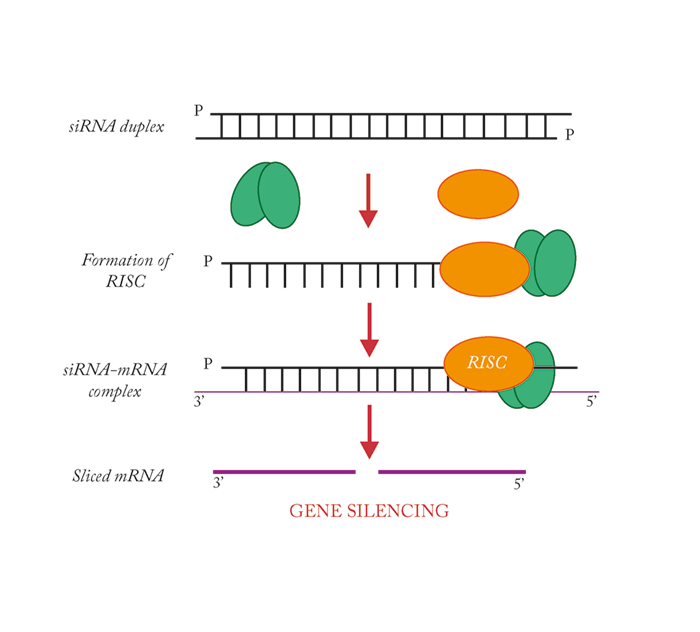
There are currently no eyedrops to treat AMD or DME – mainly because the drugs on the market (or likely to arrive soon) treat these diseases with either recombinant fusion proteins (aflibercept), monoclonal antibodies (MAbs – bevacizumab), MAb fragments (ranibizumab), or humanized single chain antibody fragments (brolucizumab). Apart from inhibiting VEGF activity, they share another commonality; they are all far too large to be delivered topically and are, therefore, administered intravitreally. So the quest is on for a small molecule that: i) can inhibit retinal neovascularization (not necessarily through VEGF inhibition), ii) can be delivered in therapeutic concentrations to the retina by eyedrop, and iii) doesn’t cause off-target issues on its journey from the ocular surface.
Small interfering RNA (siRNA) molecules are a tenth of the size of the existing crop of drugs, meaning they have the potential to penetrate from the ocular surface to the retina, where they act by silencing the expression of a target gene (Figure 1). The Spanish pharmaceutical firm, Sylentis, has developed a siRNA that silences the expression of NRARP – a gene that encodes a protein that stabilizes new endothelial connections during angiogenesis. Efficacy studies in animal models (1) have shown that the siRNA-mediated reduction of retinal NRARP expression results in the regression of angiogenic retinal lesions to an extent equivalent to anti-VEGF therapy. Sylentis still have work to do; other topical AMD therapies are further down the road of clinical development. However, none are yet in late-phase clinical trial, so there’s still lots to play for. Furthermore, in the intravitreal anti-VEGF world, we’re seeing non-responders (particularly in DME) and people losing response over time. A different mechanism of action might help in these cases – and perhaps even in patients who have stopped responding to eyedrops of the future that employ a different mechanism of action.
References
- C Pañeda et al., “Targeting NRARP with siRNA based compounds for the treatment of retinal neovascularization”. Presented at the XIII Annual Meeting of the Oligonucleotide Therapeutics Society, Bordeaux, France, September 2017.
